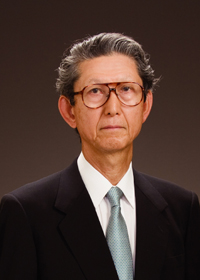
 President Atsuyuki Suzuki |
It has now been over a year since the nuclear accident at the Tokyo Electric Power Company, Incorporated (TEPCO) Fukushima Daiichi Nuclear Power Station (NPS). Of note, only be started a lengthy process of the environmental decontamination and remediation work, which has involved the efforts of the entire country. Despite our efforts, however, we must be prepared for a long way to go. In addition, while ensuring the long-term steadiness of safety condition of the damaged facilities on site, and within the power plant, the tenacious work pursuing the completion of the stepwise tasks necessary for decommissioning continues on a daily basis.
I believe that, as an organization that is the only comprehensive R&D institute involved in nuclear power in the country, the Japan Atomic Energy Agency (JAEA) must understandably direct all of its technological expertise toward resolving the “Fukushima” matter with the utmost priority.
Tasks such as the decontamination of areas outside of the power plant and environmental monitoring have been possible, and efforts to clean up the environment continue to be made throughout the country. In addition, in the future, based on the policies put forward by the government-TEPCO’s Fukushima Daiichi NPS med-long-term response council R&D headquarters, we would like to invest significant resources in providing technical support for the decommissioning activities within the power plant.
For example, with respect to environmental remediation, following an integrated investigative analysis focused on the long-term environmental fate of Fukushima prefecture and the surrounding area, we want to help support the comprehensive integration such scientifically reliable data from around the country. Regarding the decommissioning of the power plant, we have initiated basic and fundamental R&D programs concerning the handling and management of the complex and diverse forms of molten fuel collectively referred to as fuel debris. We plan to further develop these activities in the future.
Furthermore, because the decommissioning of the TEPCO’s Fukushima Daiichi NPS is a challenge concerning nuclear power, which is of the utmost importance for the country, I feel that we need to accelerate the current decommissioning plans set by the JAEA as soon as possible and consider ways to effectively capitalize on the experience and knowledge gained from these to be used for Fukushima.
The seriousness of the accident at the TEPCO’s Fukushima Daiichi NPS serves to newly raise the importance of ever more severe measures for the safety of nuclear power. In order to make this tragedy a lesson that should never be forgotten, we are increasingly pushing ahead with R&D that is able, for example, to explain the phenomena associated with severe accidents, providing measures to consider the event of such accidents, and substantiating safety through material and reactor irradiation tests. We are also planning to study ways to make innovative safety improvements in future reactors, such as the sodium-cooled reactor and the high-temperature gas reactor. Safety research remains one of the main, primary themes that JAEA must address, and we are in the process of strengthening the system toward that end.
The Framework for National Nuclear Energy Policy regarding R&D for the fuel cycle, which target the prototype fast-breeder reactor “MONJU”, reprocessing, and geological disposal, are presently under review, and any specific future planning must await the conclusions of that review. However, I do not expect the importance of the R&D associated with spent fuel that actually exists today to be lessened. The management of spent fuel is a global problem, and therefore, JAEA can play an important role internationally.
We are also earnestly engaged in R&D activities related to fusion energy technologies and quantum beam applied technologies, and moreover, in a broader sense, cutting-edge basic and fundamental R&D. In addition, we are actively pursuing innovations that can serve as catalysts for future advances and the creation of more sophisticated basic and fundamental technologies.
With regard to fusion energy technologies R&D, the JAEA, having been appointed as the sole national institute in our country for the planning of the International Thermonuclear Experimental Reactor (ITER), has played a central role in implementing that plan.
Our R&D activities in quantum beam applied technologies have proceeded in cooperation with other facilities, such as conventional nuclear reactors and accelerators, and research using Japan Proton Accelerator Research Complex (J-PARC) has been developed on an international level, with many notable accomplishments already achieved.
Furthermore, with the principal objective of cultivating promising young researchers and through continued external support, we have encouraged groundbreaking research in cutting-edge fields. These activities have been highly praised both at home and abroad, and I look forward to their continued and evolving implementation.
We believe it is important to proactively share and utilize the achievements of this organization’s R&D.
This publication constitutes a review of our achievements in the fiscal year 2011. It provides you with a look at some of the work that has been carried out, and also invites you to check the references listed and contact the researchers if there are any topics that you wish to learn more about. I would be most gratified if I could hear from you with any comments on this publication.
I hope that you enjoy this publication. Thank you for your interest.
Next: About This Publication and the Outline Organization of JAEA>